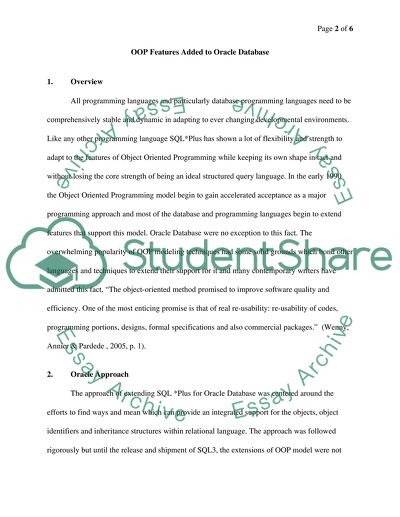Cite this document
(“OOP Features Added to Oracle Database Assignment”, n.d.)
OOP Features Added to Oracle Database Assignment. Retrieved from https://studentshare.org/information-technology/1467752-oop-features-added-to-oracle-database
OOP Features Added to Oracle Database Assignment. Retrieved from https://studentshare.org/information-technology/1467752-oop-features-added-to-oracle-database
(OOP Features Added to Oracle Database Assignment)
OOP Features Added to Oracle Database Assignment. https://studentshare.org/information-technology/1467752-oop-features-added-to-oracle-database.
OOP Features Added to Oracle Database Assignment. https://studentshare.org/information-technology/1467752-oop-features-added-to-oracle-database.
“OOP Features Added to Oracle Database Assignment”, n.d. https://studentshare.org/information-technology/1467752-oop-features-added-to-oracle-database.


